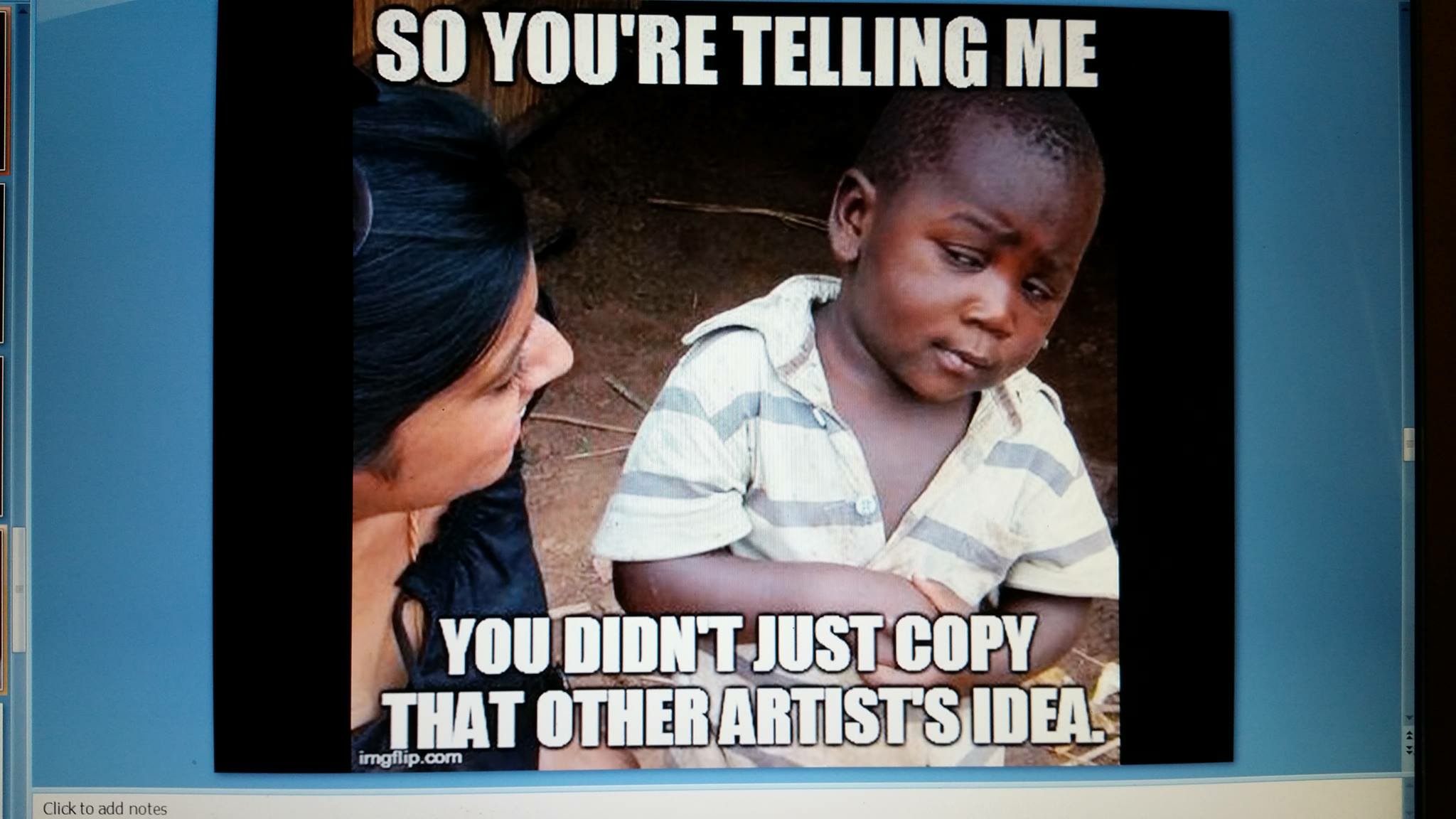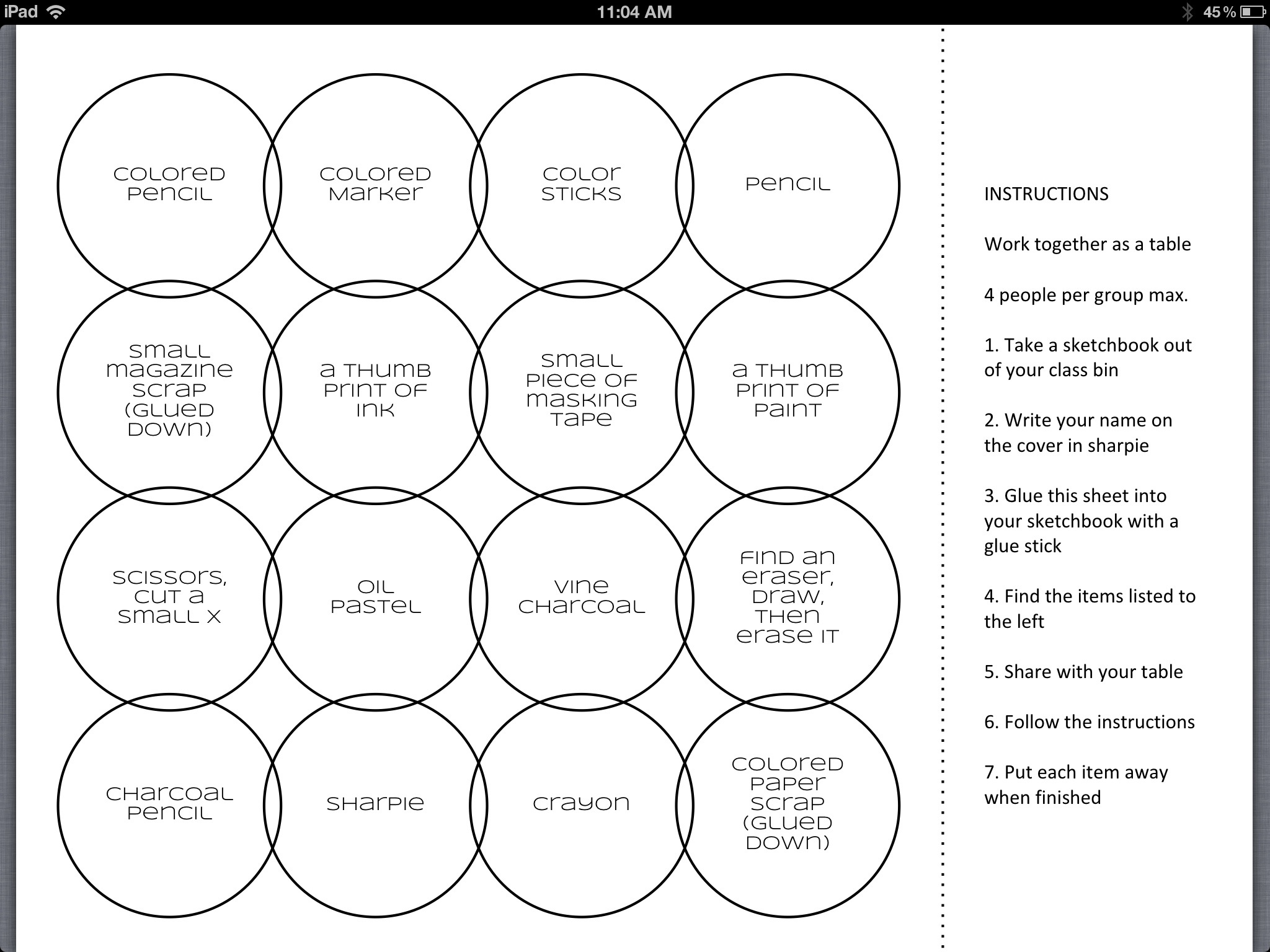Check out my Pinterest Board
1st day of art class activities from other art teachers.
Collective Drawing
• Tape a large piece of paper to an empty wall in the classroom and give each student crayons or colored pencils. Explain that this is a collective drawing activity and each of the students will have to contribute. Choose the theme for the drawing, which can be an impossible animal or an imaginary place. Ask a student to draw a circle, which will be the body of the animal. Send another student to draw the feet of the animal. Students take turns and draw body parts or details on the animal. Tell students that they can also add a background and other elements to the drawing. Alternatively, allow all students to draw at the same time and you can observe the dynamics of the group and how the students relate to each other. This task also allows you to determine the strengths of each student.
Five-Minute Drawing
• Learn about your students by giving them a five-minute task in which they have to sketch an object or animal that defines them. Ask each student to come in front of the class and explain his drawing and why he chose the object or animal. It may help if you bring an overhead projector and enlarge each sketch, so that everyone in the class sees the drawing. Allow the class to ask questions to each student. This task allows you to assess the drawing abilities of each student and helps the students learn about each other.
Doodling
• Give students a piece of paper and tell them you are going to read a set of instructions and they have to doodle following the instructions. The instructions may include “Draw a circle,” “Trace a line” and “Place four dots.” Repeat these if needed, but don’t give additional clues as to what the students need to do. Don’t allow students to look at their neighbors’ works until you finished reading all instructions. Display the works and talk about the similarities, differences and their meaning.
Round Robin Drawing
• Arrange the seats in a circle and give each student a piece of paper. Each student draws for three minutes, after which he passes the paper to the student sitting next to him. Continue and pass the paper so that each student gets to draw on each sheet of paper. Gather all drawings and analyze each drawing in front of the class. Talk about composition, colors and creativity.
The Art Rocks Escape Game by Cassie Stephens
Name of the Game: What’s in the Bag? From Melissa Purtee and The Art of Education
This game challenges students to be creative using predetermined materials and an engaging prompt. It is best played in groups of three to six students. Use the stages of the game to talk about your expectations for classroom atmosphere, material use, cleanup, and listening. Before play, share some brief expectations for work and rules. These will depend on the age of your kids and your personal classroom management style. Below is what I use with my high school classes, but it could easily be adapted for any grade level.
Game Guidelines
• Treat others with respect.
• Work must follow the rules of the game or it will be disqualified.
• A high-quality and visually appealing product must be produced.
• Each group will present their work to the class at the end of the game.
Rules
• Work must be completed in the allotted time.
• Each team member must participate.
• You must use everything from the bag.
• Work must be able to be picked up and moved at the end of class.
Game Prep
Start with one paper bag per group and fill each with a selection of random materials like paper, found objects, cardboard, and recyclables. Don’t worry too much about what’s inside, just use extras you have on hand. Also, create a list of tasks on paper strips.
Example tasks could include…
• Make a monster that can move.
• Create hats for each group member.
• Make a game that everyone can play.
• Become a rock band.
• Make your own version of the Mona Lisa
Have these prompts ready in a bowl for groups to select. Next, set out adhesives, scissors, and any additional materials you want to provide where groups can access them.
Introducing the Game
Start by telling students the process of the game. Show them where they can access additional materials and describe the process you’d like them to use.
Next, review the expectations and the rules of the game. Now, have groups select their tasks by drawing from the bowl. Give the go-ahead to open the bags and start the game!
During Play
Make sure to circulate throughout the room as kids play to help solve any issues that arise. Giving frequent reminders about the amount of time left is important to help groups focus. When time is called, you have the perfect opportunity to share your cleanup expectations. After the room is picked up, have groups share their creations and give feedback.
Benjamin Franklin said, “Tell me and I forget. Teach me and I remember. Involve me and I learn.” Games are a great first-day-of-school learning opportunity because they involve students in learning classroom expectations.
They also start the school year off with a strong message: that your classroom is a place where they will be asked to think creatively, collaborate with others, and share their ideas.
Meme’s




